Why So Crabby
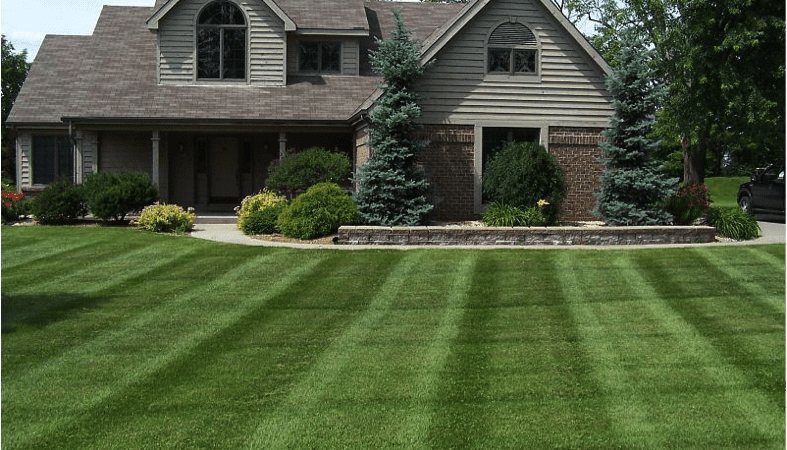
Three or four weeks ago you were probably thinking, “It looks like crabgrass may not be so bad this season.” Lawns looked good; everyone was happy.
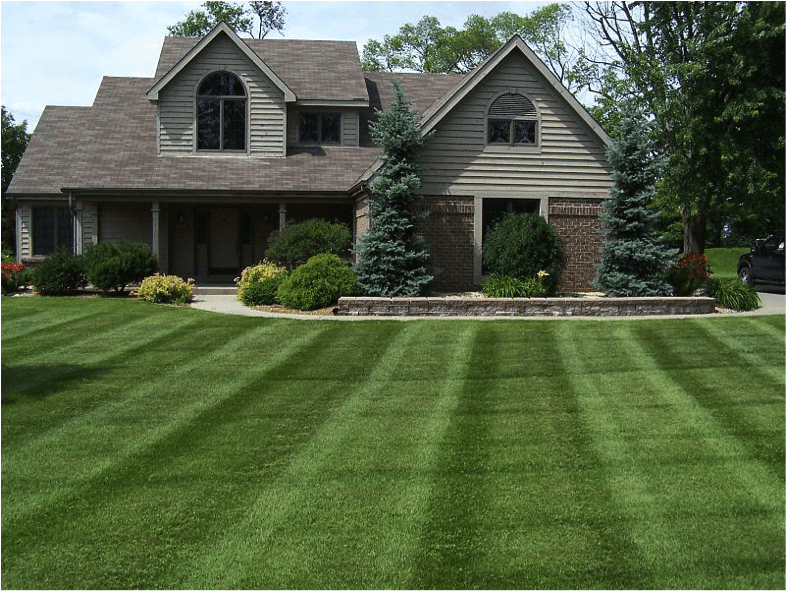
Add ten inches of rain, some oppressive heat, and an unfortunate mowing choice or two by well-meaning homeowners, and now you are humbled once again by this unwanted summer invader.
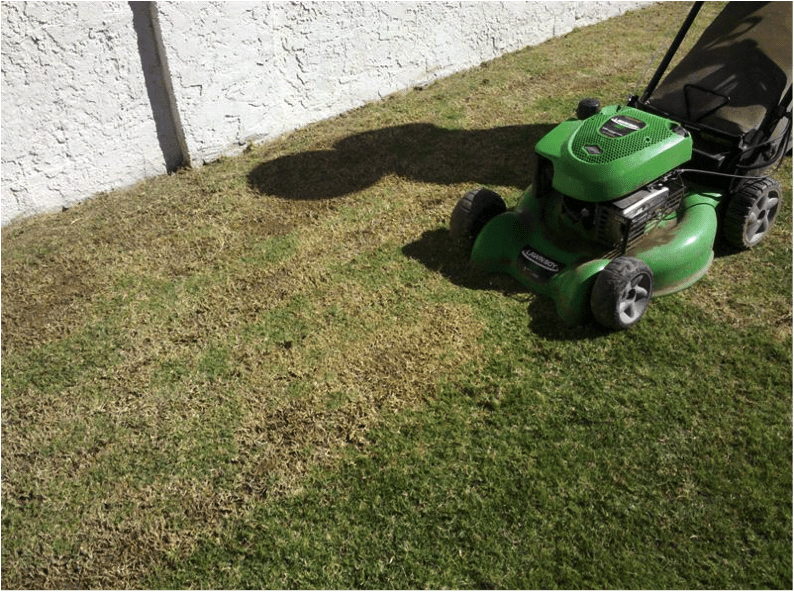
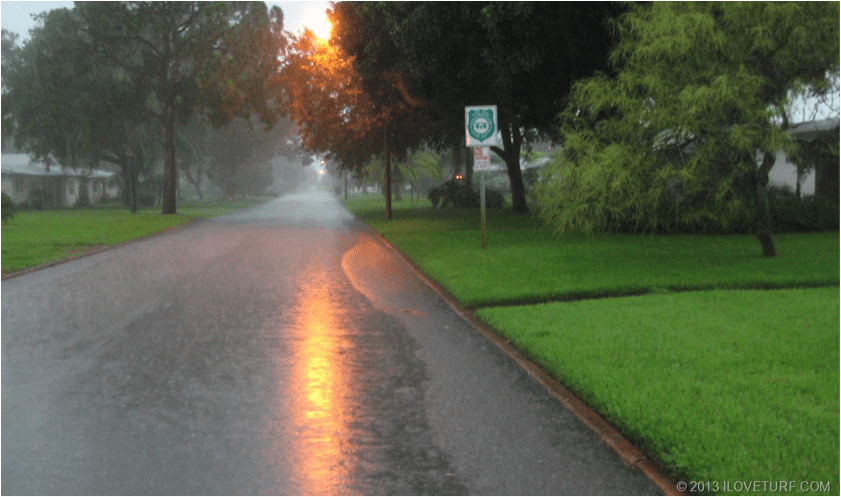
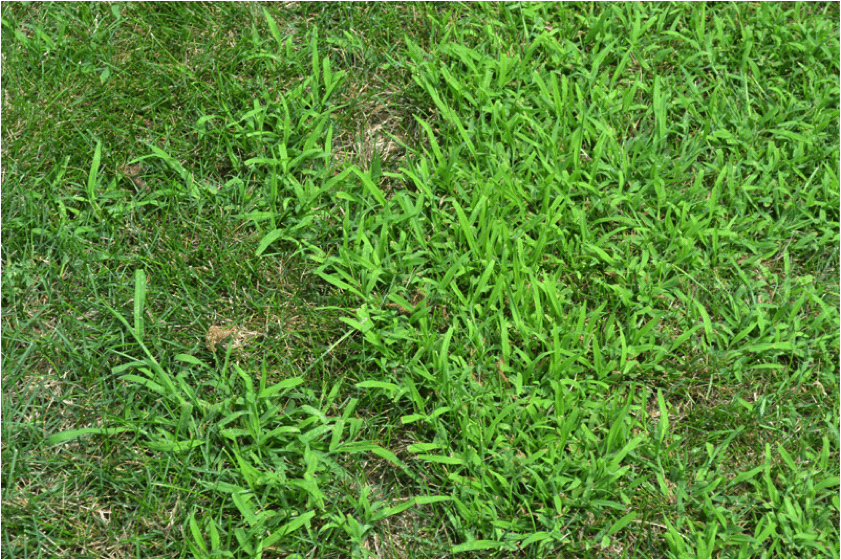
In spite of pre-emergence herbicide applications, crabgrass finds a way to make lawns and dispositions ugly. While we probably prefer rain over drought, consistent moisture coinciding with dissipating herbicide levels and high soil and air temperatures are a recipe for crabgrass and other summer annuals. Seemingly, only the densest of lawns are staying clean.
Now that we have crabgrass issues, what’s next? What are the options?
- 1. Do nothing. Let Mother Nature take care of it. Heck, that first good frost is probably less than three months away. Maybe the customers won’t really notice it.
- 2. Remove maually. Don’t laugh. If you have a few plants, it is a viable option. For me it would have to be very few.
- 3. Apply post-emergence herbicide.
There are several reasons Option 3 makes sense:
— Customers want action and results.
— Prevent seed from depositing for germination next season.
— Reduce competition to allow desirable turf to become thicker.
— Currently good soil moisture levels, which lead to more efficacious applications.
Quinclorac and tenacity (mesotrione) are the two most commonly used herbicides for post-emergence crabgrass control on cool season grasses. They can be used alone or in combination with other herbicides to broaden spectrum of control. Quinclorac is available in a several premixed combinations, such as Quincept and Q4 Plus. Your Advanced Turf representative will be glad to sort through the options with you.
Selection of product may depend on the stage of growth of the crabgrass. Both work well on younger plants up to tillering. Control with quinclorac is slow or reduced on the 2-4 tiller stage but works well on mature crabgrass.
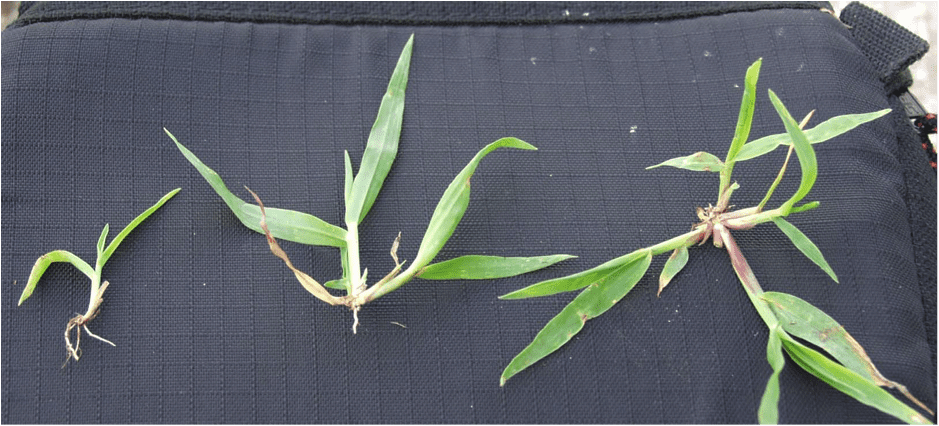
Left to right, crabgrass plants in the 3‐leaf, 5‐leaf, and 3‐tiller stage growing side‐by‐side.
If seeding, both quinclorac and tenacity can be used up to time of seeding. Both can be applied to seedling grass 28 days after emergence.
Some other tips regarding post-emergence crabgrass control:
— Use some water. A gallon per thousand with a flat fan nozzle is preferred.
— USE A SURFACTANT.
– With tenacity, use Chem Stik or Chem Stik LpH.
– With quinclorac methylated seed oil or crop oil, we recommend Microyl or a synthetic crop oil.
— Spray between mowings: 2 days before cutting 2 days after cutting.
— Two applications are often needed.
— As always, read the label.
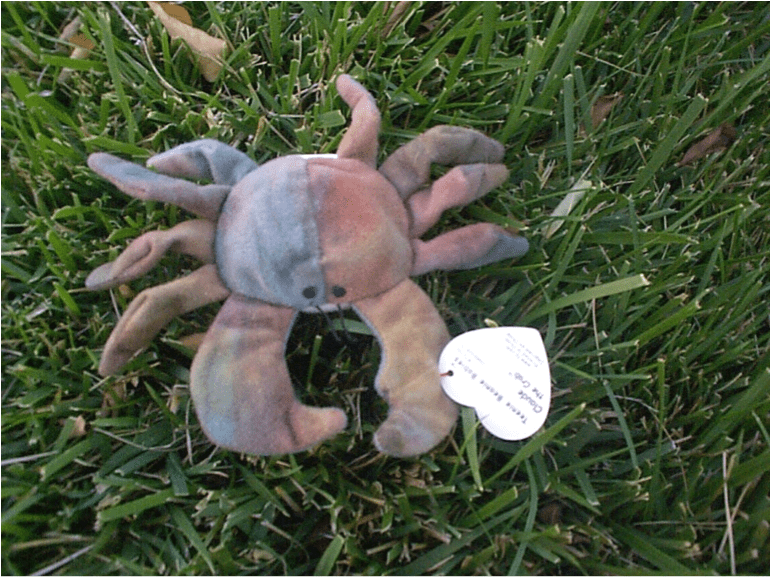
So let’s get after it and hopefully this will be the only crab in your lawns soon.
Doug Dawson
ATS Sales Representative
Crabgrass Trivia:
— Originated in Africa
— Was taken to Europe and used as a forage crop for livestock
— Introduced to North America by immigrants
— Seeds were harvested and turned into flour or fermented and made into beer. I’m surprised no micro brewery has hit on this yet.
— Each crabgrass plant can produce 150,000 seeds
— For you foodies, try this recipe, Yum!
Crabgrass Muffins:
1 cup flour
1 cup crabgrass flour
2 teaspoons baking soda
2 teaspoons ginger (optional)
3/4 cup water
2 eggs
1 teaspoon vanilla
1/4 cup oil
1/2 cup raisins







